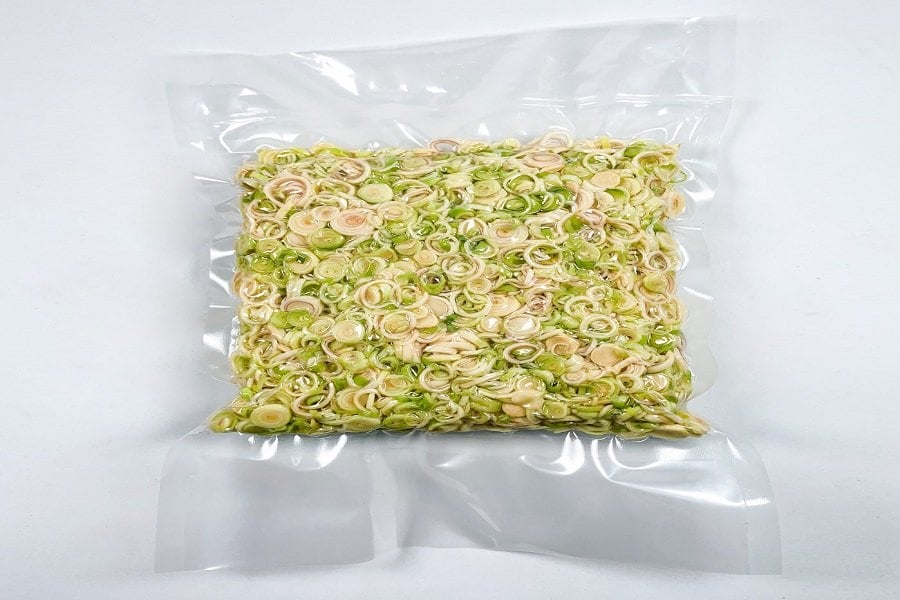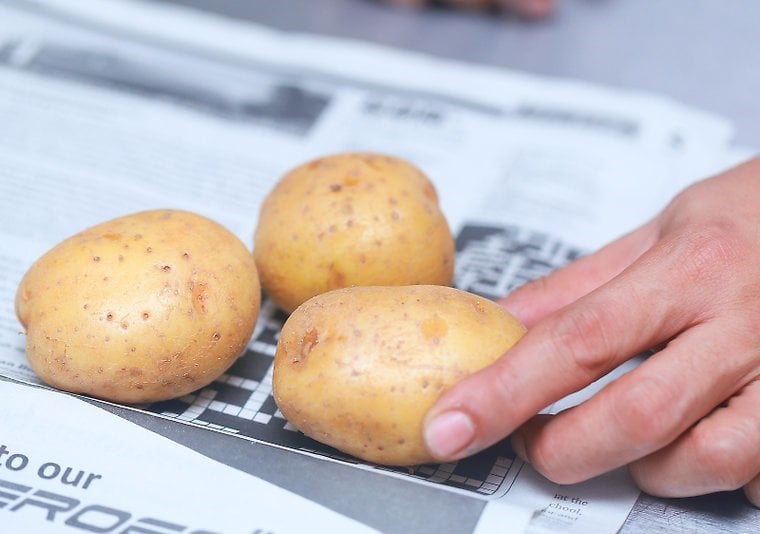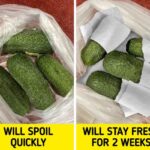Scallions
Start by washing the scallions, then pat them dry with a paper towel before removing the roots. Chop them to your desired size, place them in a freezer bag, squeeze out the air, and store them in the freezer. When needed, you can add them directly to your dishes without thawing.
Cilantro
Method 1: Freezer Storage
Cut off the roots and lower stems of the cilantro, then soak it in cold water to remove any dirt. Rinse it thoroughly, two to three times to be sure. Pat the cilantro dry, place it in a freezer bag, squeeze out the excess air, and seal the bag. Store it in the freezer, and use it directly when needed.
Method 2: Fridge Storage
Cut off the roots and any damaged leaves, then soak the cilantro in cold water for 5-10 minutes. Pat it dry and gently roll it in a paper towel. Place the cilantro in a ziplock bag or airtight container, and consider labeling it with the storage date. Cilantro can stay fresh for up to a week or even longer.

Cilantro can stay fresh for up to a week or even longer
Ginger
Rice Storage: Clean and pat the ginger dry, then place it in a bag of rice to prevent wilting.
Alcohol Storage: Soak the ginger in clear alcohol, but don’t leave it too long to preserve its flavor.
Freshness Bag Storage: Put salt into a freshness bag, place the ginger inside, squeeze out the air, and tie the bag securely. The ginger will stay fresh for several months.
Salt Storage: Wrap the ginger in a paper towel with salt and use plastic wrap to store it in the fridge for up to six months to a year.
Soil Storage: Place the ginger in a box with a layer of sand, and water it regularly to prevent dryness.
Tea Storage: Wrap the ginger with dry tea in a plastic bag and store it in a cool place.
Chili Peppers
Wash and pat dry the chili peppers, then place them in a freezer bag. There’s no need to thaw them before use.
Lemongrass
Cut off the tops and tough outer layers, wash the lemongrass, and cut it into sections. Place the pieces in a freezer bag, squeeze out the air, and store them in the freezer.

Cut off the tough outer layers, wash and chop the lemongrass before freezing
Mushrooms
Store mushrooms (unwashed) in a paper bag with parsley to keep them fresh for 3-5 days.
Celery
Wrap celery in aluminum foil to keep it fresh for longer when stored in the fridge, or place it in a jar of water for up to a month.
Eggplant
Eggplants shouldn’t be stored in the fridge as they tend to become soft and lose nutrients. Keep them in a well-ventilated area, away from direct sunlight.
Tomatoes
Avoid storing tomatoes in the fridge as it affects their flavor. Instead, keep them in a breathable environment at room temperature.
Potatoes
Store potatoes in a cool, dark, dry place, away from light and moisture, to prevent sprouting and rot. Use paper bags, mesh bags, or boxes with ventilation holes.

Store potatoes in a cool, dark, dry place to prevent sprouting and rot
Garlic and Onions
Garlic and onions should not be refrigerated due to the lack of air circulation and high humidity. Keep them in a cool, dark place, such as a nylon bag hung up.
Carrots
Carrots can be stored for extended periods when buried in sand, which helps maintain moisture and prevent spoilage.
With these storage methods, you can keep your vegetables fresh and tasty during the rainy season without worrying about food quality.



































